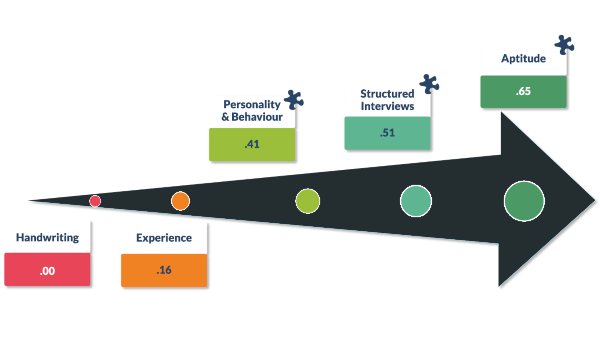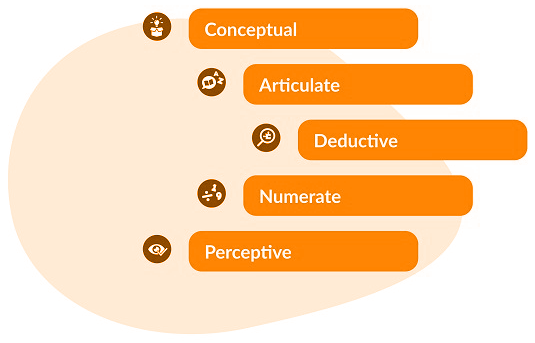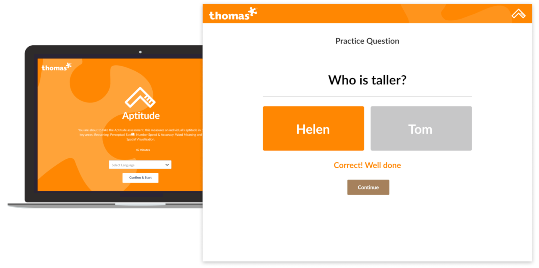Request an Individual (GIA) Test Now
The price of the GIA test is (815 Saudi Riyal) per person. If you would like to take the test, click the button below to register and pay, and then we will contact you and send the test link to your email.
Request a Group (GIA) Test Now
Aptitude tests give hiring managers and HR teams the tools to assess a candidate’s suitability for a role based specifically on their skills and abilities. Because the tests are graded on this criteria, it helps identify the right person for the role that is available. Being able to understand how a candidate will perform tasks or knowing how they will react to different situations is, of course, a huge advantage.
Mainly carried out over online platforms, some organisations may choose to invite you into a workplace to carry out these tests – it depends on each business’ recruitment process.
Read More +
It’s widely acknowledged that not everyone excels at school, and that results from standard national exams or industry-accepted tests aren’t the best way to understand an individual’s capabilities, the level of challenge they need to keep them stimulated and committed, or whether they will respond well to development activities.
Research by the American Psychology Association inc. Frank L. Schmidt & John E. Hunter (1998) reviewed 85 years of research and found that higher cognitive ability, or aptitude as it is also called, as measured by the Thomas Aptitude assessment, is directly linked to higher employee productivity and performance in role.

- Can the individual cope with the mental demands of the job?
- How quickly this person can learn?
- Could this person be a high flyer?
- Is this person a problem solver?
- How quickly this person retain new skills & procedures?
Read More +
Fluid Intelligence (pure processing speed) – basic intellectual processes of manipulating abstract concepts, generalisations and logical relationships (Carroll, 1993). Fluid intelligence is used to solve new problems, use logic in new situations and identify patterns. Crystallised Intelligence (learnt factors) –verbal, mechanical, and numerical ability etc. Crystallised intelligence is the ability to use learned knowledge and experience.
The Aptitude assessment is designed and theoretically underpinned by Carroll’s taxonomy/classification of cognitive abilities components of ‘g’, which is general intelligence (Spearman’s & others’ general factor of mental performance). However, the assessment is concerned much more with fluid intelligence and the use of procedural rather than declarative knowledge, by measuring elementary cognitive abilities (perceptual speed, verbal reasoning etc.). This assesses what we have termed trainability rather than ‘IQ’.
The Aptitude assessment looks at an individual’s speed of processing information and ability to learn and develop new skills. The General Intelligence Assessment is used for a variety of purposes: recruitment, retention, development, management, identifying training needs, career guidance, succession planning and benchmarking.
The Aptitude assessment was first developed as a way to measure cognitive abilities and trainability of Armed Forces known as the British Army Recruitment Battery (BARB). As the assessment continued to develop, the Human Assessment Laboratory used the potential of computer technology to pioneer the research and development of item-generation whereby test items are automatically produced to create an extremely large number of different but equivalent forms of the same test (Irvine, Dann & Anderson, 1990). GIA, along with a paper-based version, was developed from the same theoretical principles and resources as BARB. Thomas International integrated the paper-based version into its product suite in 1993 and GIA in 2006.


Read More +
Although the overall score measures ‘trainability’, each of the five tests measures a specific cognitive function (detailed below):
Perceptual Speed: This test measures the perception of inaccuracies in written material, numbers and diagrams, the ability to ignore irrelevant information, the ability to recognise similarities and differences, and error checking. It tests the speed of semantic encoding and comparison.
Reasoning: This test measures the ability to make inferences, the ability to reason from information provided and to draw the correct conclusions. This test assesses the ability of an individual to hold information in their short-term memory and solve problems.
Number Speed and Accuracy: This is a test of numerical manipulation and a measure of basic numerical reasoning ability. It measures the degree to which an individual can work comfortably with quantitative concepts.
Spatial Visualisation: This test measures the ability to create and manipulate mental images of objects. This test correlates with tests of mechanical reasoning, and assesses an individual’s ability to use mental visualisation skills to compare shapes. It relates to the ability to work in environments where visualisation skills are required to understand and execute tasks.
Word Meaning: This test assesses word knowledge and vocabulary. It assesses the comprehension of a large number of words from different parts of speech and the ability to identify the words that have similar or opposite meanings. It assesses the ability to work in environments where a clear understanding of written or spoken instructions is required.
Read More +


